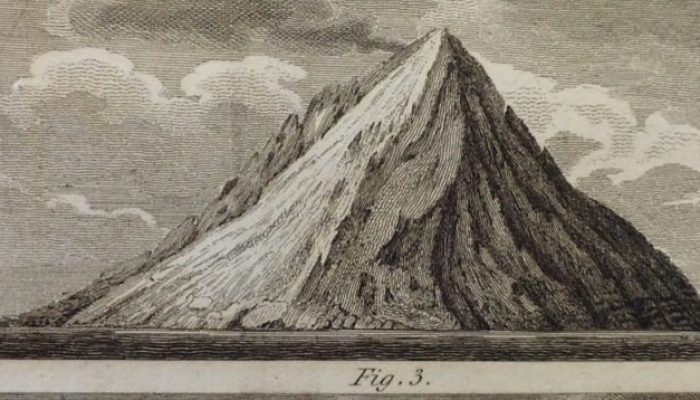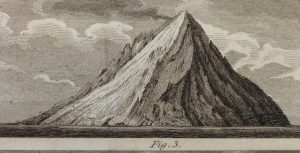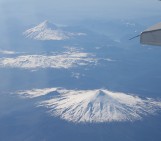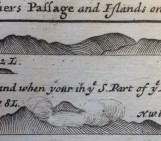

Oshima Ko Jima on May 4, 1805. Sketch by Wilhelm Tilesius.
One of the delights of talking to children of primary school age is their disarming ability to ask really simple questions that demand straightforward answers, but leave you struggling to throw your academic caution to the wind. Even with the questions of the biggest, the smallest, the oldest and the youngest there are still different ways of (over)interpreting the question, that can leave you floundering. So for those of you looking for a clear answer to ‘what is the smallest volcanic island in the world?’, here is a suggestion of an answer from the early 19th Century. In 1805, Wilhelm Gottlieb Tilesius was engaged as the physician, naturalist and draftsman on the Russian ship Nadezhda, on the first Russian circumnavigation of the world. In May 1805, they were sailing across the sea of Japan and past the Matsumae peninsula in northern Hokkaido, heading for Kamchatka, when they came across two small volcanic islands ‘Oosima and Coosima’. Tilesius described Coosima (Oshima Ko Jima) as ‘perhaps the most diminutive volcanic island in the world’, noting that it was essentially a small pointed rock, which was incessantly smoking. The island was just ‘150 fathoms’, or 270 m, tall; lacking in vegetation and made of dark blue lavas with a weatherbeaten dark-red skirt around the base. Tilesius made all of his observations from on-board ship, as it took a quick tour around the island, and describes ‘light coloured smoke’ and ‘blue sulphur flame’ from the summit crater. Tilesius’ paper suggesting that this was the world’s smallest volcanic island soon found it’s way into Charles Daubeny‘s ‘Active and Extinct Volcanoes‘, and shortly afterwards in a number of popular periodicals of the time. Whether – with an area of 1.5 square kilometers – it really is the world’s smallest volcanic island; and whether it is actually ‘active’ are both moot points; in fact, so little seems to be known about the island that the Smithsonian catalogue still lacks a photograph of it.
Dr W Tilesius, 1820, On the Volcano called by the Japanese Coosima and situated in the neighbourhood of Cape Sangar, in the archipelago of Japan, Edinburgh Philosophical Journal, Vol III, no 6, October 1820, pp. 349-358.



Elna
Exactly what I was looking for! Not much is known of the Oshima Ko Jima volcano. Thank you so much.
Cheers, Elna